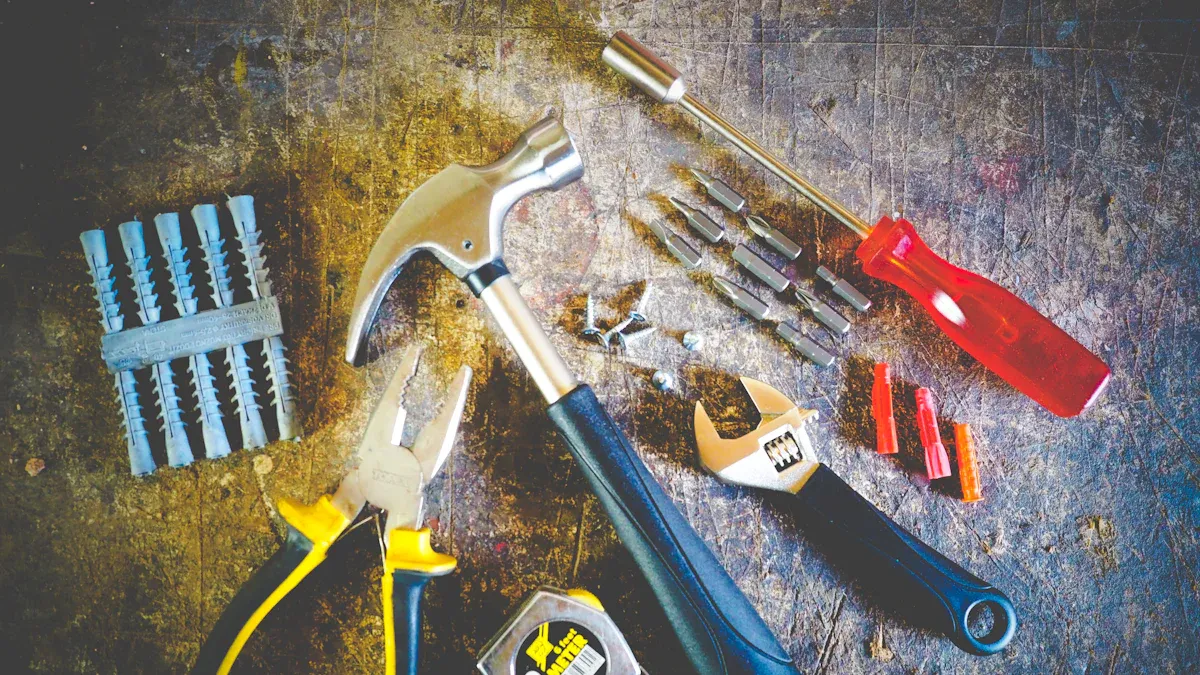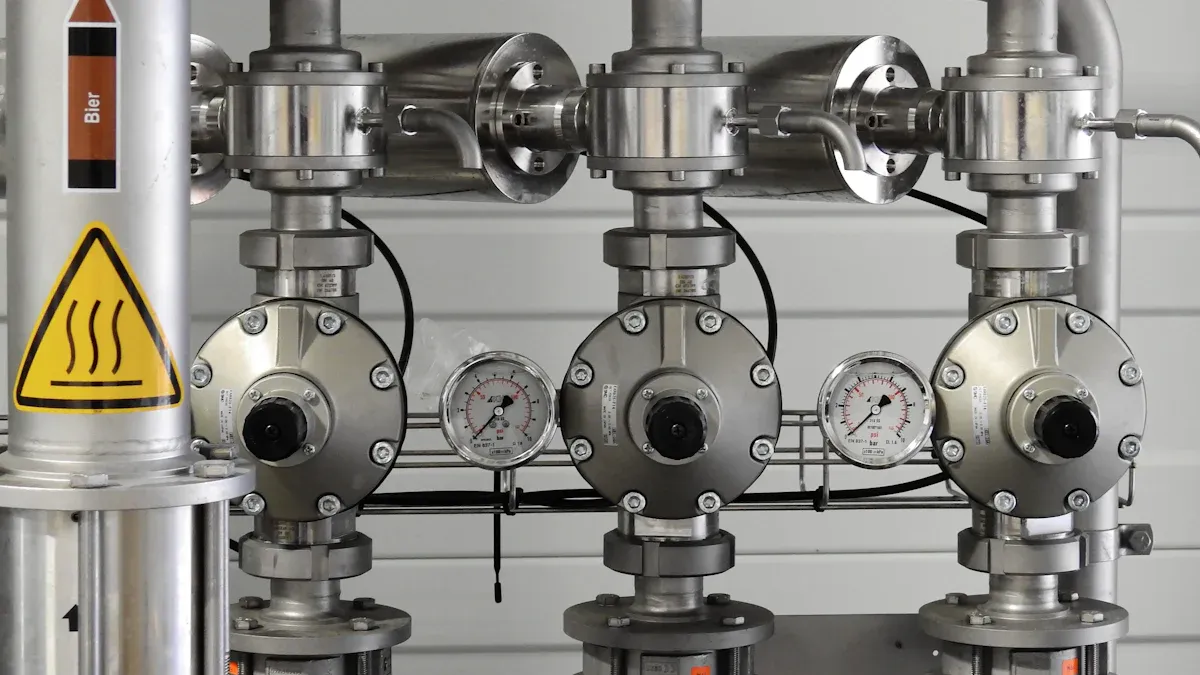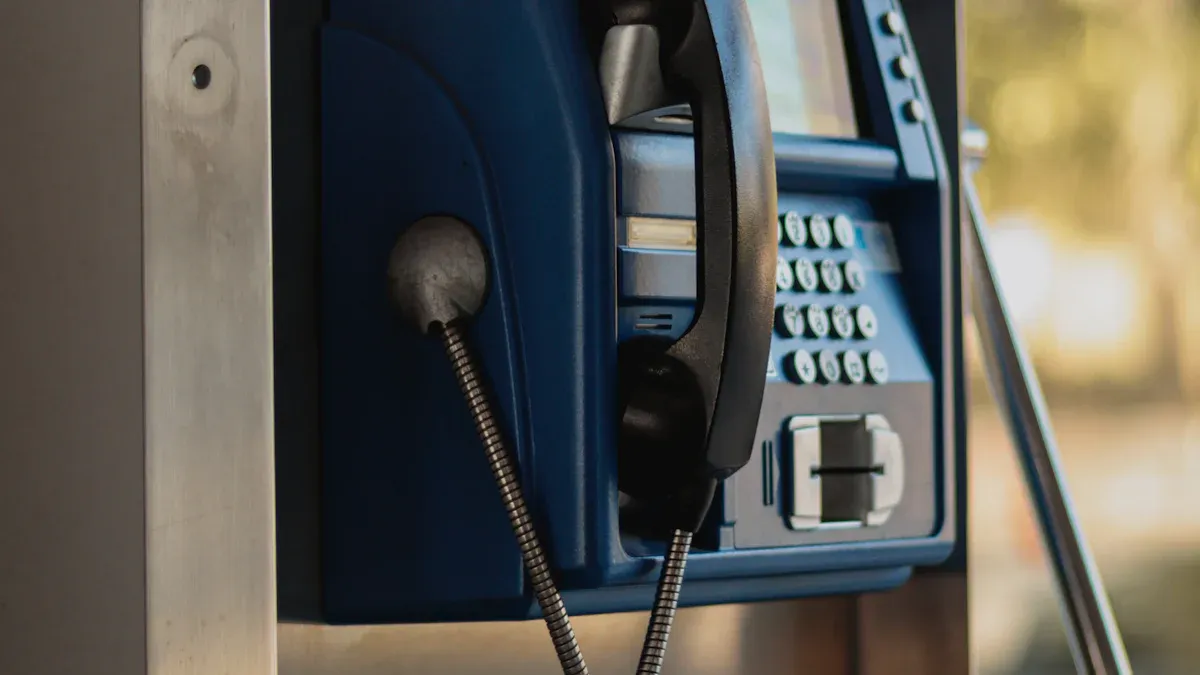
Proper installation plays an essential role in maintaining security and functionality in high-security areas. Whether it’s a jail wall mounted telephone or an IP wall mounted telephone, these devices must be securely mounted to ensure they perform well under tough conditions. Stainless steel wall mounted telephones, known for their durability, are ideal for such environments.
Security upgrades are on the rise. For example, between 2015 and 2018, the number of surveillance cameras in the U.S. grew by 50%. This trend highlights the growing need for reliable security tools. Similarly, a sturdy station public telephone can add another layer of safety in public spaces, ensuring uninterrupted communication.
Preparing for Installation

Assessing the Installation Site
Before installing a stainless steel wall mounted telephone, it’s crucial to evaluate the site. Start by identifying the primary purpose of the telephone. Will it be used for voice calls, internet access, or both? This helps determine the type of equipment and wiring needed. Next, assess the environment. Is the area prone to moisture, extreme temperatures, or heavy use? These factors influence the choice of materials and installation methods.
For high-security areas, consider additional safety measures. The table below highlights key areas to review during the assessment:
| Process Safety Areas Assessed |
|---|
| Operating Practices |
| Mechanical Integrity |
| Safe Work Practices |
| Facility Siting |
| Product Storage & Transfer |
Cleaning and Preparing the Wall Surface
A clean wall ensures a secure and lasting installation. Begin by removing any furniture or fixtures near the installation site. Dust the wall from top to bottom using a microfiber cloth. For greasy or dirty surfaces, use a mixture of warm water and mild dish soap. In damp areas, apply mold or mildew removers.
For tougher stains, baking soda or vinegar can work wonders. After cleaning, rinse the wall thoroughly with clean water and let it dry completely. This step prevents residue from interfering with the installation process.
Tip: For metal surfaces, use a solvent-based cleaner to remove oils or rust effectively.
Gathering Necessary Tools and Equipment
Having the right tools on hand makes the installation process smoother. Below is a table of essential tools and their specifications:
| Tool/Equipment | Description |
|---|---|
| Keystone Wall Phone Plate | Stainless steel, wall-mounted |
| Wall Phone Outlet Jack | 4-conductor, 6-position, stainless steel |
| Screwdriver Set | For securing screws |
| Drill | For creating mounting holes |
Ensure all tools are in good condition before starting the installation.
Verifying Compliance with ADA and Local Regulations
Compliance with regulations ensures safety and accessibility. For example, the ADA requires public telephones to be wheelchair accessible. Telephones must also meet specific reach range requirements to accommodate users in wheelchairs.
| Section | Requirement | Purpose |
|---|---|---|
| 217.2 | Wheelchair accessible telephones must be provided where public telephones are available. | Enhances safety and usability for individuals with disabilities. |
| 704.2 | Telephones must comply with specific reach range requirements. | Ensures accessibility for users in wheelchairs. |
Check local regulations as well. Hiring a licensed professional can help ensure compliance and avoid potential issues.
Step-by-Step Installation Guide

Marking and Drilling Mounting Holes
Accurate marking and drilling are essential for a secure installation. Start by identifying the exact location for the mounting holes. Use a pen to trace the hole positions onto the wall, ensuring alignment with the telephone’s mounting bracket. For added precision, employ a transfer punch to create a small indentation at the center of each mark. This helps guide the drill bit and prevents slipping.
When drilling, a drill press offers the highest accuracy. If using a handheld drill, take it slow and maintain alignment with the markings. Begin with a small drill bit to create pilot holes, then gradually increase the size to match the mounting screws. For situations where direct drilling isn’t feasible, transfer marking methods can help replicate the hole positions onto the new surface.
Tip: Always wear safety goggles and gloves when drilling to protect against debris and sharp edges.
Securing the Mounting Bracket
The mounting bracket serves as the foundation for the stainless steel wall mounted telephone. Choose a bracket that suits the installation environment. For tight spaces, a low-profile bracket provides a snug fit, while a universal bracket offers versatility for wall or ceiling mounting.
| Mounting Bracket Type | Description |
|---|---|
| Low-profile bracket (AIR-AP-BRACKET-1) | Provides a tight fit between the access point and the ceiling, but not suitable for network or electrical boxes. |
| Universal bracket (AIR-AP-BRACKET-2) | Versatile for various installations, including wall mounting and above ceiling, but leaves a gap for cable routing. |
Secure the bracket using tamper-resistant screws to deter unauthorized removal. Tighten the screws evenly to ensure the bracket remains level and stable.
Attaching the Stainless Steel Wall Mounted Telephone
Once the bracket is in place, attach the stainless steel wall mounted telephone. Align the telephone with the bracket and slide it into position. Use the provided screws to secure the device firmly. Make sure the screws are tightened evenly to prevent wobbling or misalignment.
For high-security areas, consider using tamper-resistant screws or bolts. These add an extra layer of protection against vandalism or theft.
Note: Double-check the alignment before tightening the screws completely. Misalignment can affect the telephone’s functionality and appearance.
Connecting Wiring and Testing Functionality
Proper wiring ensures the telephone operates smoothly. Begin by connecting the wires according to the manufacturer’s instructions. Use cable testers to check the continuity and integrity of the cables. These tools can identify breaks, shorts, or miswires that might disrupt functionality.
For complex systems, wire tracers help locate cables and verify their connections. Network cable testers are ideal for checking Ethernet and signal quality, while coaxial cable testers diagnose issues in applications like cable TV. Once the wiring is complete, test the telephone by making a call or verifying internet connectivity.
Tip: If the telephone doesn’t function as expected, use a cable fault finder to locate and resolve wiring issues quickly.
Safety and Security Considerations
Using Tamper-Resistant Security Screws
Tamper-resistant security screws are a game-changer for protecting installations in public and high-security areas. These screws are specifically designed to prevent unauthorized access and vandalism. They require specialized tools for removal, making it nearly impossible for someone without the right equipment to tamper with the installation.
Here’s how they make a difference:
- They prevent vandalism in public spaces, such as parks and transit stations.
- They secure valuable equipment in retail and industrial settings, reducing theft.
- In transportation, they stop unauthorized modifications that could compromise safety.
- They protect sensitive data in electronic enclosures by blocking unauthorized access.
Real-world examples highlight their effectiveness:
- A university lost $20,000 worth of digital light projectors due to traditional screws. After switching to tamper-resistant Key-Rex® screws, no thefts occurred in seven years.
- A hospital faced $40,000 in computer thefts. Once they implemented these screws, the losses stopped entirely.
- ATM machines secured with standard screws were stolen. After upgrading to anti-theft screws, no breaches were reported.
For installations like a stainless steel wall mounted telephone, these screws add an extra layer of security, ensuring the device stays in place and functions as intended.
Protecting Against Electrical Hazards
Electrical safety is critical during installation. Improper handling of wiring can lead to severe consequences, including injuries or even fatalities. In the U.S., electrical injuries cause approximately 1,000 deaths annually, with 400 of these linked to high-voltage incidents. Non-fatal electrical shocks affect around 30,000 people each year, and 5% of burn injuries from electrical accidents require specialized care in burn units.
To minimize risks:
- Always turn off the power supply before starting any wiring work.
- Use insulated tools to handle electrical components.
- Ensure all connections are properly insulated to prevent short circuits.
Most electrical injuries occur in workplaces, making it the fourth leading cause of traumatic deaths in such settings. Following these precautions not only protects the installer but also ensures the long-term safety of the telephone’s users.
Ensuring Proper Placement to Deter Tampering
The placement of a stainless steel wall mounted telephone plays a significant role in its security. Installing the device in a visible, well-lit area discourages tampering and vandalism. People are less likely to interfere with equipment when they know they’re being watched.
For high-security areas, consider these tips:
- Mount the telephone at a height that’s accessible but not easily reachable for tampering.
- Avoid placing it near corners or secluded spots where visibility is limited.
- Use surveillance cameras to monitor the installation site.
Proper placement not only deters tampering but also ensures the telephone remains functional and accessible to those who need it.
Adhering to High-Security Protocols
High-security installations demand strict adherence to safety protocols. The global average cost of a data breach reached $4.45 million in 2023, emphasizing the importance of robust measures to prevent unauthorized access and data theft.
To meet these standards:
- Use tamper-resistant screws and brackets to secure the telephone.
- Regularly inspect the installation for signs of wear or tampering.
- Train personnel on proper maintenance and emergency procedures.
By following these protocols, organizations can protect their assets and reduce the financial risks associated with security breaches. A stainless steel wall mounted telephone, when installed securely, becomes a reliable communication tool in high-security environments.
Maintenance and Longevity Tips
Conducting Regular Inspections
Regular inspections are key to keeping a stainless steel wall mounted telephone in top condition. These checks help identify wear, corrosion, or damage early, allowing for timely repairs. A simple inspection routine can save time and money by preventing bigger issues down the road.
Here’s a quick guide to what should be inspected:
| Maintenance Practice | Importance |
|---|---|
| Surface Protection | Shields steel from corrosive environments, prolonging integrity and functionality. |
| Routine Inspections | Detects wear, corrosion, or damage early, allowing for timely interventions. |
| Proper Handling | Prevents mechanical damage that can compromise the protective oxide layer of the steel. |
By following these steps, users can ensure the telephone remains reliable and functional for years to come.
Cleaning and Preventing Corrosion
Cleaning stainless steel regularly prevents corrosion and keeps it looking great. Use warm soapy water with a soft cloth to clean the surface. Rinse thoroughly with clean water and dry with a clean cloth to avoid water spots. For stubborn grease, a mix of water and vinegar or a stainless steel cleaner works wonders.
To protect against corrosion in harsh environments, corrosion inhibitors like ethanolamine or imidazolium-based ionic liquids can be used. These create a protective barrier on the metal surface, especially in areas exposed to hydrochloric acid.
Tip: Avoid harsh chemicals that can damage the steel. Regularly disinfect surfaces in public spaces with a safe disinfectant.
Troubleshooting Common Issues
Even the most durable devices can face occasional hiccups. If the telephone stops working, start by checking the wiring connections. Loose or damaged wires are often the culprit. Use a cable tester to identify breaks or shorts.
If the issue persists, inspect the mounting bracket and screws. Misalignment or loose screws can affect functionality. Tighten them as needed. For more complex problems, consult the manufacturer’s manual or seek professional help.
Note: Regular maintenance reduces the chances of unexpected breakdowns.
Replacing Worn Components
Over time, some parts may wear out and need replacement. Regular inspections help spot these issues early. Replacing worn components promptly ensures the telephone continues to perform at its best.
Using high-quality replacement parts is crucial. They maintain the device’s precision and reliability. Following a scheduled maintenance plan also prevents unexpected failures.
Reminder: Keep spare parts on hand for quick replacements when needed.
Installing stainless steel wall phones requires careful preparation, secure mounting, and consistent upkeep. These steps ensure the device stays functional and reliable over time.
Why choose stainless steel wall phones?
They’re tough, tamper-resistant, and perfect for high-security spaces. From durability to compliance, they check all the boxes.
By following these tips, anyone can create a safe and efficient communication setup.
FAQ
How do you choose the right location for installation?
Pick a spot that’s visible, accessible, and well-lit. Avoid secluded areas to deter tampering and ensure the stainless steel wall mounted telephone stays secure.
What tools are essential for installation?
A drill, screwdriver set, and mounting bracket are must-haves. Ensure the tools are in good condition to simplify the process and achieve a sturdy installation.
How often should maintenance be performed?
Inspect the stainless steel wall mounted telephone every few months. Regular checks prevent corrosion, ensure functionality, and extend the device’s lifespan.


